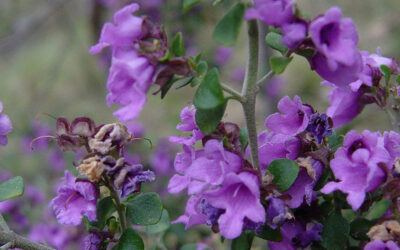Book Review
Reviewed by Tobias Nickel
Wilderness Digest
April 2021 | Volume 27, Number 1
BRAIDING SWEETGRASS: INDIGENOUS WISDOM, SCIENTIFIC KNOWLEDGE, AND THE TEACHINGS OF PLANTS
by Robin Wall Kimmerer. 2013. Milkweed Editions, Minneapolis, MN. 408 pp. $18.00 (pb).

As a trained scientist, decorated professor, and member of the Citizen Potawatomi Nation, Kimmerer is a self-described “traveler between scientific and traditional ways of knowing” (p. 37). Drawing on this diverse background, Kimmerer seeks to transform our relationship to land and open our eyes to an alternative way of understanding informed by Indigenous wisdom and botanic study. Through this lens, symbiotic relationships between all living things and their surroundings come into focus. Indeed, from Kimmerer’s collection of essays emerges “a worldview shaped by mutual flourishing” (p. 371), in which it is impossible to separate individual well-being from the health of the whole.
Kimmerer argues that once we perceive organisms (including humans) and their environs as connected and engaged in mutual caregiving (rather than separate entities locked into rivalry), then the world presents itself as a gift. A gift, in turn, invokes an ongoing relationship characterized by feelings of gratitude from which springs a sense of responsibility to give back. If we can learn to see and walk again in “a world full of gifts” (p. 23), we can cultivate cultures of gratitude (both in ourselves and society at large), in which we act and recognize ourselves as cocreators of biocultural diversity. However, in keeping with the theme of reciprocity, “it is not a question of first getting enlightened or saved and then acting. As we work to heal the earth, the earth heals us” (p. 340).
Braiding Sweetgrass provides a much-needed examination of long-held assumptions about human separateness and offers a fresh way of perceiving the human-nature relationship in terms of reciprocity, connectedness, and caregiving. In doing so, the book lights a way for how we can heal our broken relationship with the land (and, by extension, ourselves).
Moreover, in promoting a revitalization of indigenous lands, language, culture, and philosophies, the book is highly relevant during this time of reinvigorated national discussions around issues of inclusivity, equity, and social justice. Kimmerer both inspires and challenges us to meaningfully integrate Indigenous perspectives into our economic, political, and stewardship agendas, with potentially subversive and far-reaching consequences. If we embrace this daunting but auspicious challenge of opening up to alternative ways of knowing and reconceptualizing our relationship with the more-than-human world, a more equitable, resilient future will be within our grasp.
Reviewed by Tobias Nickel, student in the Master in Environmental Management program at Western Colorado University; email: tobias.nickel@western.edu.
Read Next
Protected Areas in a Post-Pandemic World
I am excited that 2021 brings us the 27th volume of the International Journal of Wilderness, and with is comes new beginnings.
Interpreting John Muir’s Legacy
In judging Muir’s legacy, we should be compelled to look inward, admit our own shortcomings, and acknowledge that we, too, have been participants in a system that oppresses Black Americans, Indigenous peoples, and other people of color.
The Curse of the Wild Horses: Deromanticizing Feral Horses to Save Australia’s Kosciuszko National Park
This article documents two walks in the Byadbo Wilderness Area of Australia’s Kosciuszko National Park that revealed inordinate numbers of feral horses, whose population has increased rapidly despite ongoing drought and consequent environmental damage



